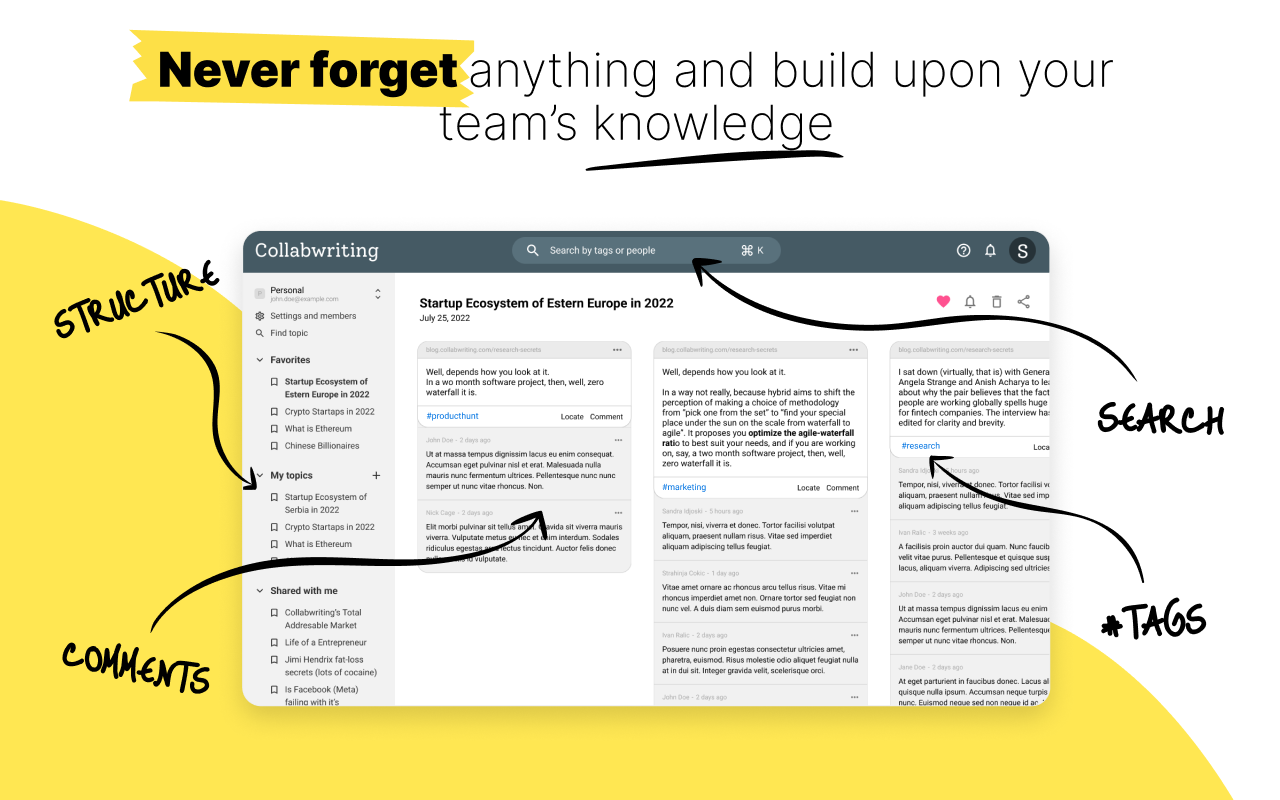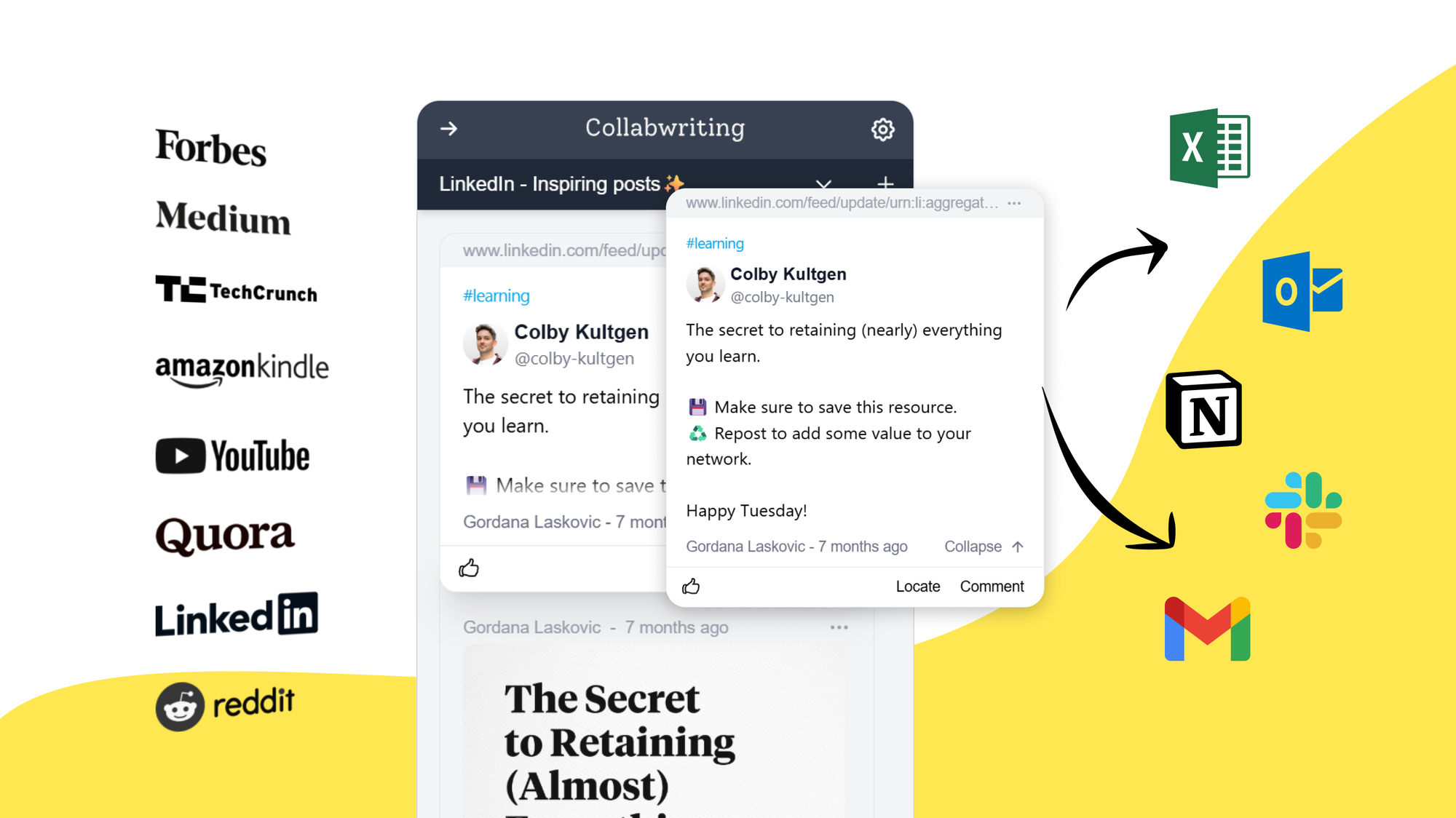To excel in the competitive business world, companies need to go the extra mile and stay ahead of their rivals. The secret to thriving in such a challenging environment is to be flexible, adaptable, and always eager to improve.
And content creation is no different.
What is continuous improvement?
Continuous improvement is the fuel that drives an organization toward excellence.
The key to success lies in making small improvements frequently and involving all employees in sharing knowledge and generating fresh ideas.
Companies that excel at continuous improvement understand that success is not only about what they do but also about how they do it. By innovating and exploring better ways to deliver to customers and respond to changes in the external environment, they stay one step ahead of the competition.
Constant improvement is like taking a fitness journey; you may be a bit out of shape at the start, but with dedication and a plan, you can reach your peak form.
Ways to continuously improve the process of creating content
Want to achieve greatness?
Start small.
Rome wasn't built in a day, and neither is a culture of continuous improvement. By taking small, manageable steps, companies and their employees can reap the benefits of a constant drive toward progress.
Identifying areas for improvement
Organizations need to assess their current processes, systems and already published posts. This could involve analyzing feedback, conducting internal audits, or soliciting input from employees.
On average, companies that focus on customer experience achieve 4-8% higher revenue than their competitors.
Developing a plan
Once areas for improvement are identified, organizations need to develop a plan to implement changes. This could involve creating a new content plan, identifying resources needed, and determining timelines.
For example, it can mean we need to add a bit more precision to our content by involving SMEs or that we'll be tackling a new channel to distribute our content and need to think about new formats to publish.
Putting pen to paper to see how much time and money this will take, can then help us make more informed decisions when we take the first steps to implement change.
Implementing changes
With a plan in place, it's time to get to work.
This might involve testing various tools or platforms, publishing new or even just revamping some old pieces of content we have.
The best way to learn is to simply start doing, but the next step is the actually critical part. If we miss it, all our hard work can go to waste.
Monitoring progress
To ensure that changes are having a positive effect, organizations need to track progress and measure outcomes. Collecting data from social media, conducting surveys, or asking for feedback from users and employees are all things we should keep in mind.
Basically, if we track it, we can learn from it.
Iterating and refining
Continuous improvement is an ongoing process, so organizations need to be willing to iterate and refine their approaches over time.
This might involve making extra tweaks to processes, revising plans based on updated information, or experimenting with more innovative strategies.
Key things to consider first
Knowing your audience
Before you dive into the exciting world of content creation, it's essential to have a crystal-clear understanding of who your audience is.
Who are you speaking to? What do they care about, what problems do they face, and what are their deepest desires?
By pinpointing your audience's specific characteristics, you can create content that's customized to their tastes and speaks to them on a personal level.
Understanding their interests
Now that you've locked down your ideal audience, it's time to dive deeper into their minds!
What are they into? What makes them tick? What kind of stuff do they love to read and learn about?
By utilizing cutting-edge tools like Google Trends, social media analytics, and online forums, you can uncover all the juicy details about your audience's interests and preferences.
Keyword research
If you want to write content that your audience can't resist reading, you can't afford to skip keyword research. By getting a handle on the exact phrases your readers are typing into search engines, you can craft articles that show up at the top of their results pages and offer real value once they click.
It is estimated that people perform 3.5 billion searches per day and 1.2 trillion per year.
The good news is that there are amazing tools like Google Keyword Planner and SEMrush available to help you pinpoint the right keywords for your content.
Providing value
Engaging content is a surefire way to capture your audience's attention and keep them coming back. Whether it's by providing them with enlightening educational material, stimulating thought-provoking articles, or entertaining videos, your content should always offer something unique that they can't find anywhere else.
After all, the key to high-quality content is to deliver value to your readers and leave them craving more.
Storytelling
Now it's time to supercharge your content creation with the ultimate secret weapon: storytelling!
When you weave a captivating tale, you can forge a powerful connection with your audience emotionally. Forget about boring facts and figures - stories are what stick in people's minds.
With the power of storytelling at your fingertips, you can make your content unforgettable and relatable to your audience.
Visualize
Visuals are a must-have!
Not only do they add variety to your text, but they also grab your audience's attention and make your content more captivating.
So don't be shy - sprinkle in some eye-catching images, mind-blowing infographics, and jaw-dropping videos to take your content to the next level!
Your readers will love you for it, and they'll be more likely to share your content with others.
Track your analytics
To capture your audience, it's essential to produce content they crave. To do this, you must stay on top of what's effective and what's not.
Keep a close eye on your analytics to discover which pieces of content are drawing in the most traffic, interest, and conversions. Armed with this knowledge, you can craft a winning content strategy that will keep your readers coming back for more.

Collabwriting - Shareable Notes on Web Pages and PDFs
Collabwriting allows you to gather all your online sources in one place. Just highlight, save, and collaborate with anyone on any content you find online.
Final notes
Keep in mind that the aim is to improve your process, not achieve flawlessness.
Don't obsess over perfection because there will always be areas to improve upon. Striving for perfection can often be a hindrance to progress.
It's important to recognize that continuous improvement is an ongoing process, not a one-time event. By embracing a mindset of constant growth and development, organizations can achieve significant advancements in efficiency, effectiveness, and quality.
This can be achieved through implementing processes that enable employees to identify areas for improvement and to act on them. Organizations should also be open to trying new ideas and taking risks to find better solutions.
Finally, it is important to measure the results and reward improvement initiatives.





![Best Research Collaboration Tools in 2025: Zotero, Paperpile & Collabwriting [Compared]](/content/images/2025/07/image--7--1.png)







